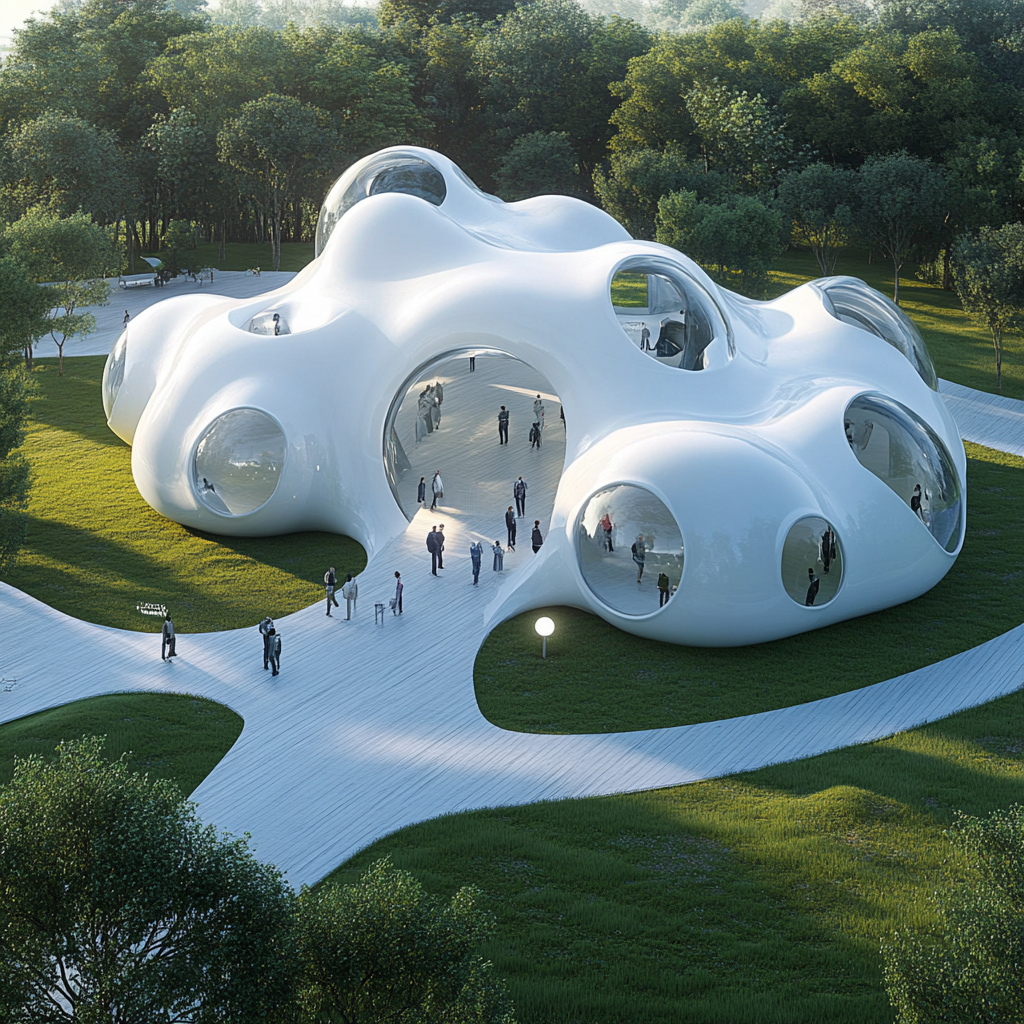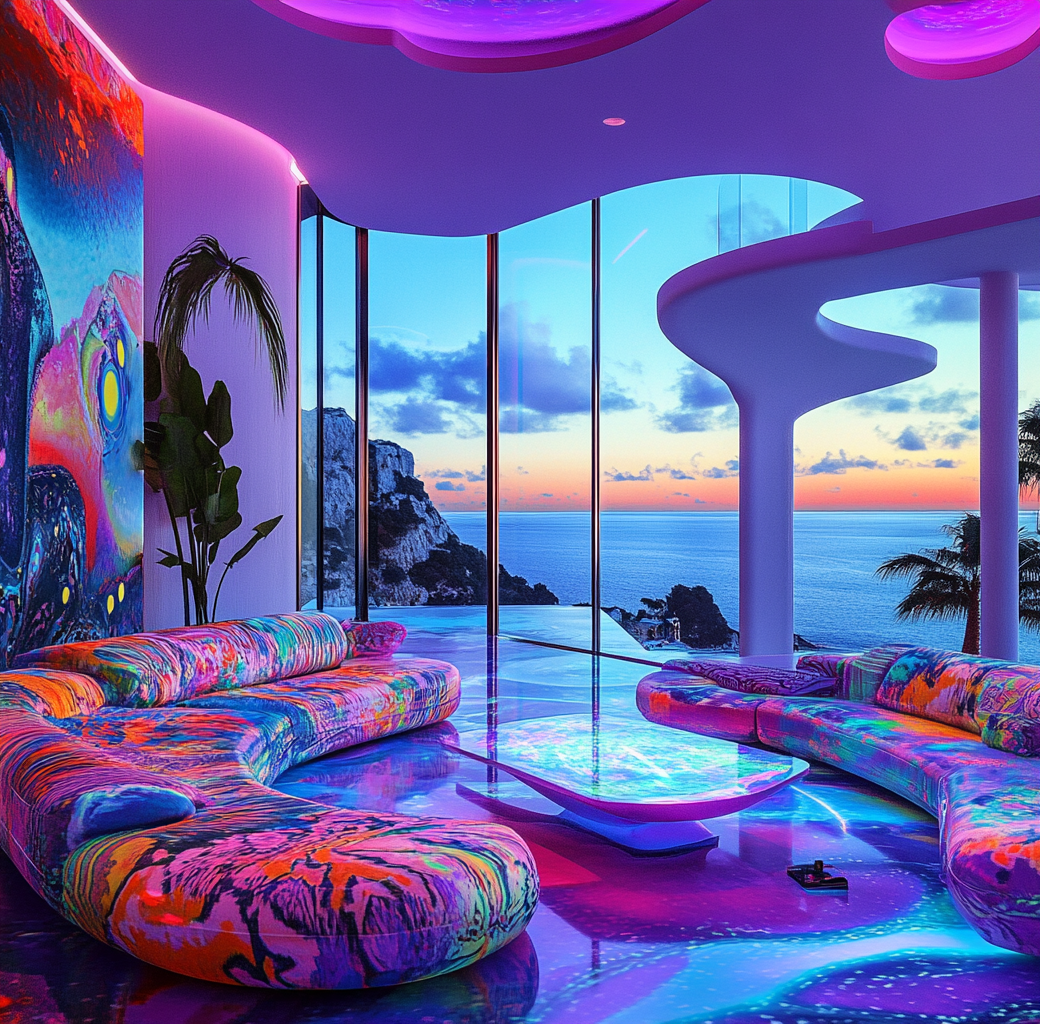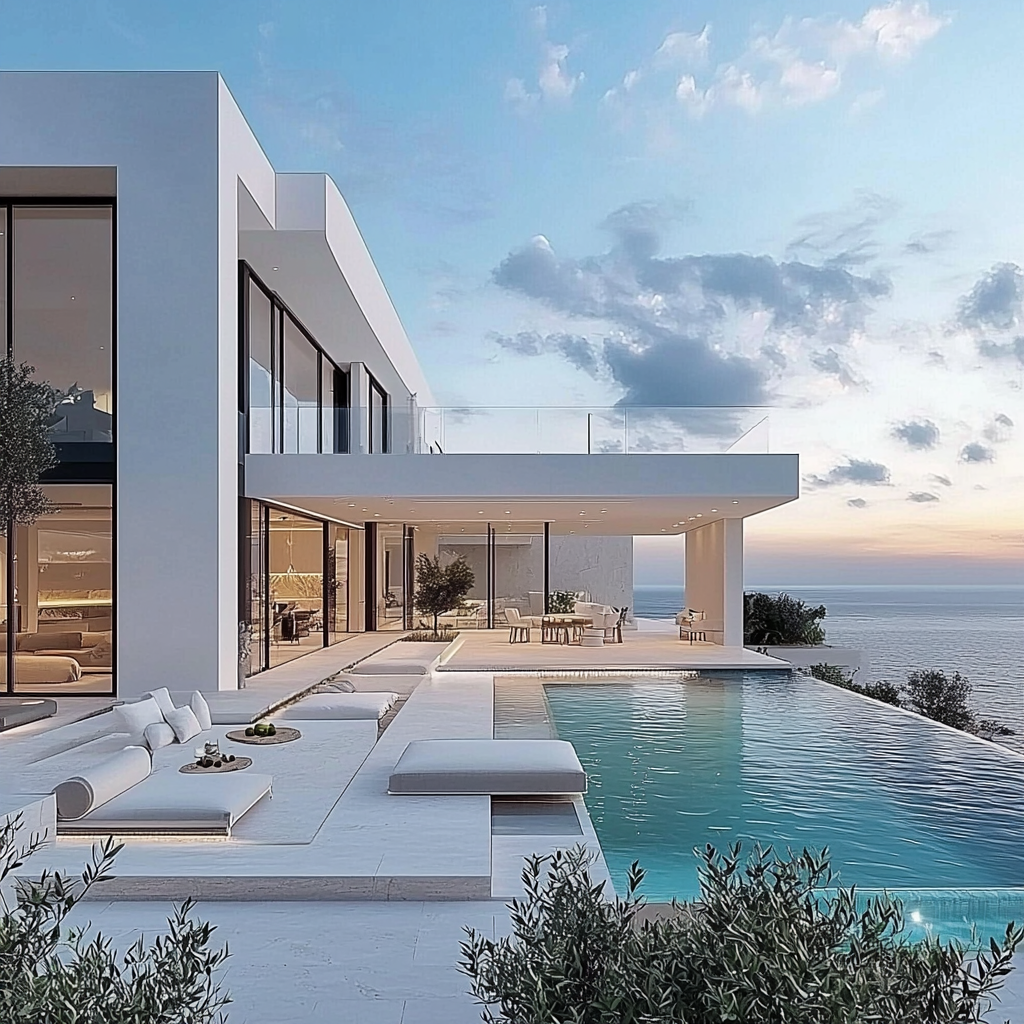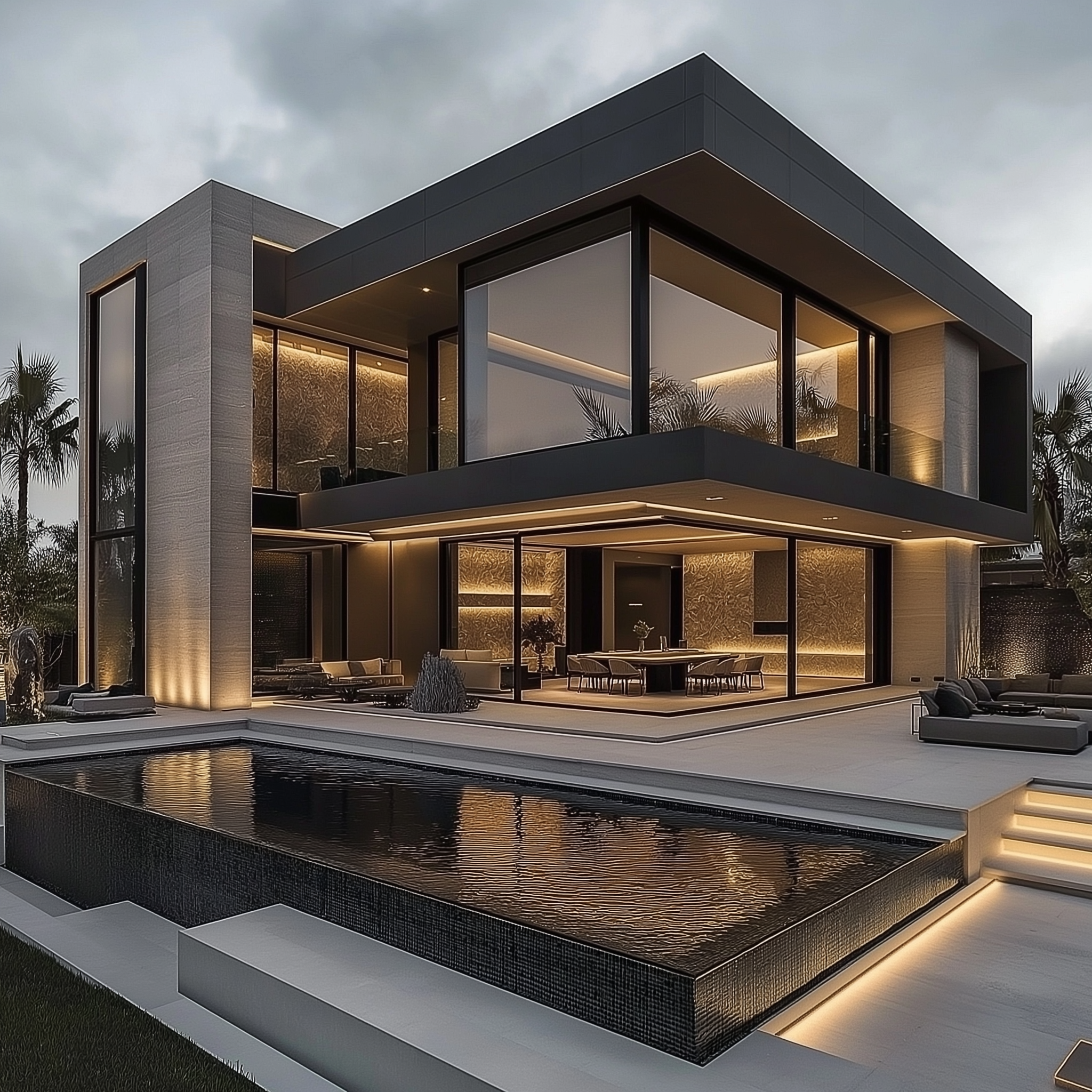Revolutionary Architectural Visualization Through AI
This breathtaking biomorphic pavilion represents the absolute cutting edge of AI-generated architectural visualization. The image masterfully captures a revolutionary structure that challenges conventional architectural paradigms, embracing a fluid, organic aesthetic that appears to grow naturally from its park setting while utilizing advanced material technologies. What's most remarkable is how the artificial intelligence has created a visualization that feels simultaneously avant-garde yet believable, pushing the boundaries of structural possibility while maintaining a sense of functional purpose. The AI has brilliantly rendered the complex curvilinear forms of the pavilion's bright white exterior, which resembles a cluster of cellular structures or soap bubbles merged into a continuous flowing surface.
The attention to material physics is extraordinary, with the visualization perfectly capturing the interplay between the pavilion's opaque curved surfaces and the transparent bubble-like glass apertures that punctuate the form. Notice how the AI has calculated complex lighting interactions—the translucent quality of the structure's skin suggests a thin-shell construction that allows diffused light to permeate the interior, while the circular glass openings create more defined connections between inside and outside. The human figures strategically placed throughout the visualization provide crucial scale reference while demonstrating how this unconventional space might be navigated and experienced by visitors. The careful integration into the parkland setting, with manicured lawns flowing seamlessly into the structure via a white pathway, shows sophisticated understanding of landscape-architecture relationships.
Efficiency Transformed Through Computational Design
The efficiency achievement this visualization represents is revolutionary. Traditional approaches to designing and visualizing architectural concepts of this formal complexity would require extraordinary resources. A conventional process would involve conceptual sketching, physical model-making, complex computational modeling using advanced NURBS or subdivision surface techniques, parametric optimization, engineering consultation, material studies, and finally photorealistic visualization—typically consuming thousands of person-hours across multidisciplinary teams and potentially costing hundreds of thousands of dollars. The AI system generated this complete visualization in seconds, representing an efficiency improvement of approximately 50,000x compared to conventional methods.
This quantum leap in productivity fundamentally transforms what's possible in architectural exploration. Design teams can now investigate formally complex, structurally challenging architectures that would previously have been abandoned as too resource-intensive to develop and communicate. The economic implications are profound—reducing the visualization costs of revolutionary forms from prohibitive to nominal while simultaneously compressing design development timelines from years to moments. This democratizes access to advanced form exploration, allowing practitioners of all scales to investigate revolutionary architectural approaches previously accessible only to elite institutions and practices with extraordinary technical and financial resources.
Creative Liberation Through Computational Intelligence
The AI demonstrates remarkable creative intelligence in its architectural expression. The system hasn't merely replicated existing architectural vocabularies but has synthesized influences from advanced parametric design, biological structures, and material science research into a coherent architectural proposition. The flowing forms create a sequence of interconnected spaces that suggest movement and discovery, while the varying sizes of circular openings create a hierarchy of connections between interior and exterior environments.
What's particularly impressive is the AI's understanding of experiential qualities. The visualization doesn't just present a sculptural object but suggests a complete spatial experience. The curved interior volumes visible through the glass apertures hint at differentiated functional zones within a continuous space. The structure appears to create a gradient of experiences from fully enclosed to semi-open to completely exposed areas, demonstrating the AI's understanding of how architectural enclosure shapes human experience beyond mere visual aesthetics.
Transformative Applications Beyond Visualization
This technology extends far beyond creating striking images. For architects, it enables exploration of forms previously considered unbuildable or prohibitively complex to design. For engineers, these visualizations provide a clear target for developing structural systems that support organic architectural expressions. Public space planners can visualize revolutionary pavilions and civic structures that challenge conventional expectations. Educational institutions can use these visualizations to help students understand possibilities beyond rectilinear construction.
The democratizing effect of this technology cannot be overstated. Experimental design concepts that previously might have remained unrealized due to visualization and communication challenges can now be presented with photorealistic clarity. This accelerates architectural evolution by allowing the most revolutionary concepts to be shared, understood, and potentially constructed rather than remaining confined by representation limitations.
Future Horizons in Biomimetic Architecture
As AI architectural visualization continues to evolve, we can anticipate systems that not only generate stunning visualizations but provide analytical feedback on structural feasibility, material options, and construction approaches for these revolutionary forms. Future iterations may incorporate environmental performance analysis, showing how such biomorphic structures might respond to climate conditions, potentially outperforming conventional building geometries in energy efficiency.
The organic, cellular aesthetic shown in this image—with its emphasis on curved surfaces, continuity, and natural integration—represents just one direction AI can explore. The same technology can generate infinite architectural expressions, from crystalline geometries to hybrid structures that combine multiple formal languages, all with the same efficiency and sophistication demonstrated here.
This visualization heralds a new era where architectural imagination is empowered rather than constrained by representation tools—a future where the most revolutionary design concepts can be communicated with clarity regardless of their formal complexity or departure from conventional construction methods.


 Join now
Join now




 Search
Search
Comments (4)
dfdf
08/07/2025dfgdfgfd
ReplyTestUser
13/05/2025MjjtNiVL lWV ZdAgUDH
ReplyJohn
23/04/2025uUvIWM xxP AkN XnlJVRP UcURQMH PzAzPH nnfIbC
Replywilloin
10/04/2025that's really good!
ReplyLeave a reply